 |
||
|
||
| ||
 CONTENTS
Today we are testing two unique graphics cards equipped with quite interesting cooling devices. But first of all have a look at the list of reviews of the ATI's DX9 family. Theoretical materials and reviews of video cards which concern functional properties of the GPU ATI RADEON 9500/9700/9800
There is no need to tell you about RADEON 9800. You can find all the information about it above. But I still want to look closer at HIS products we are studying today. Above you could see the collage of the card on the snow. The point is that the marketing slogan IceQ Arctic Cooling demonstrates the unique cooling system installed on the Platinum series. Do you feel cold or even frozy thinking of the icy air driven by that cooler?:-) Well, there's a bit of truth in it. HIS, or Hightech Information System, is a Hong Kong company which has its production facilities in China. Its history of foundation looks very interesting. As it's written on its site, four Christians who were computer enthusiasts as well founded the company in 1987 to praise God. They were the first in the world to have such lofty ideas. As you can see the company has been working for over 15 years already, and it has become one of the strongest companies in Hong Kong. Unfortunately, it's not that widely popular on our local market, and many products made by HIS sell here in OEM and noname packages, which can be a very easy way for swindlers to discredit this company. Nevertheless, I haven't heard yet of any negative opinions about HIS products based on RADEONs of different types. Today we'll study TWO cards which look like two peas in a pot, including the accessories and packages. They differ only in the core and memory clock speeds. So, they are the RADEON 9800 and RADEON 9800 PRO based cards from HIS of the Platinum series. Both card are equipped with 128 MB memory. Cards
The design in both cases, R9800 and R9800 PRO, is based on the reference one. 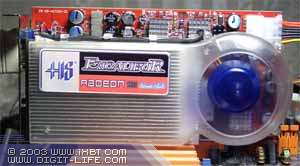 The massive cooler locks the first PCI slot. 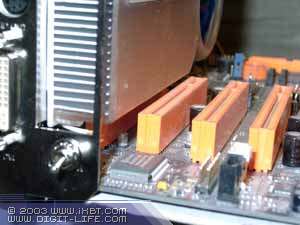 Here is how the card looks when inserted into the mainboard: 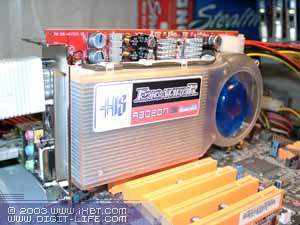 The cooler has a switch that can change the fan rotation modes (high and low). 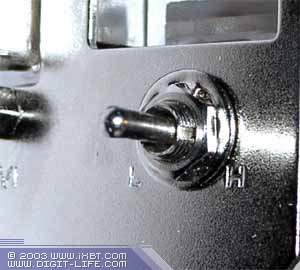 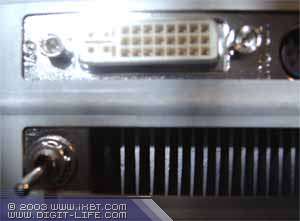 Unfortunately, the switch can prevent installation of the card into some cases where the cutout for expansion cards starts over the upper edge of the mainboard: you can see that the lower screw of the DVI connector can't reach the lower edge of the cutout because of the switch. Here's the cooler: Testbed and driversTestbed:
VSync off, S3TC off in applications. Cards for comparison:
Judging by the current prices, the RADEON 9800 PRO 128MB and RADEON 9800 have no direct competitors because the GeForce FX 5900 Ultra is still more expensive than the 9800 PRO and the GeForce FX 5900 is also dearer than the 9800. But anyway, they are the closest competitors, that is why when comparing the cards remember that NVIDIA's solutions have higher prices. Overclocking
Note: Overclocking depends on a sample, and you shouldn't generalize the results of one card to all video cards of this trade mark or series. Note that such excellent overclocking results were obtained without any additional cooling! Both cards worked at those clock speeds at the average room temperature. That is why I decided to test both cards both at the default clock rates and at the increased ones, especially because the manufacturer positions its IceQ as the best solutions for overclockers. Test resultsBefore we start examining 2D quality, I should say there are no complete techniques for objective 2D quality estimation because:
With the ViewSonic P817 monitor and BNC Bargo cable the cards showed
excellent quality at the following resolutions and clock speeds:
Test results: performanceNote: ANISO 8xQ stands for Anisotropic 8x Quality, ANISO 16xQ for Anisotropic 16x Quality. Because of NVIDIA's policy of optimizations the anisotropic filtering is often simplified even in the Quality mode, that is why we decided that we should compare ANISO 16xQ (ATI) and ANISO 8xQ (NV). Both modes have their strong and weak points, - let's consider they compensate each other. Test applications:
If you need patch 49 and the demo benchmarks please email me.
Quake3 Arena
 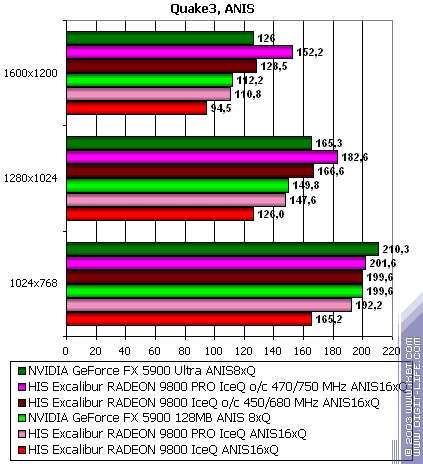 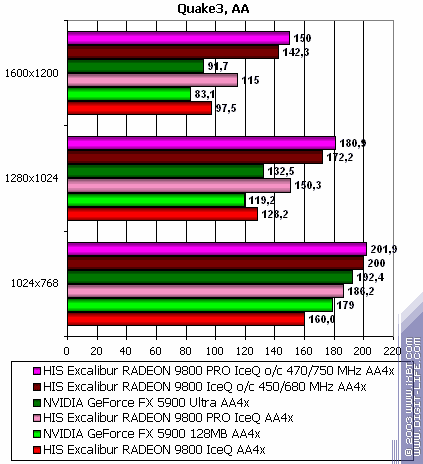 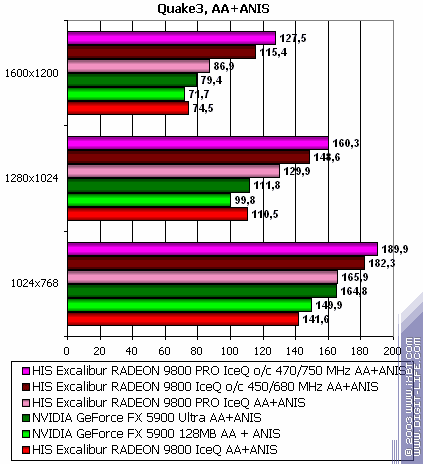 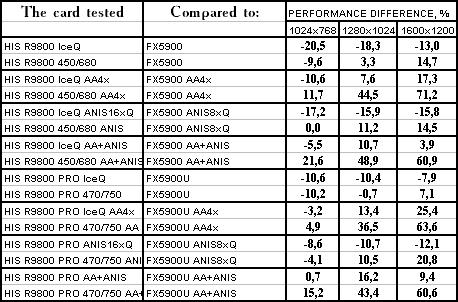 No AA, no anisotropy: defeat AA enabled: victory in high resolutions Anisotropy enabled: defeat again AA and anisotropy enabled: parity or even a little victory Serious Sam: The Second Encounter
 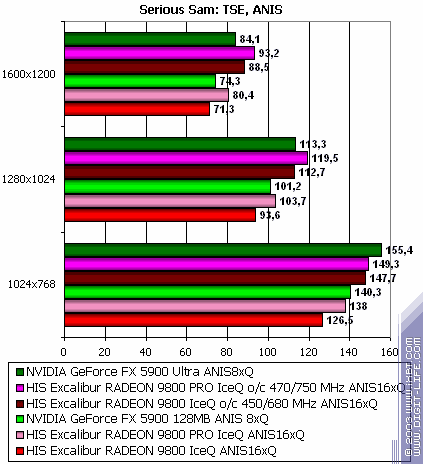 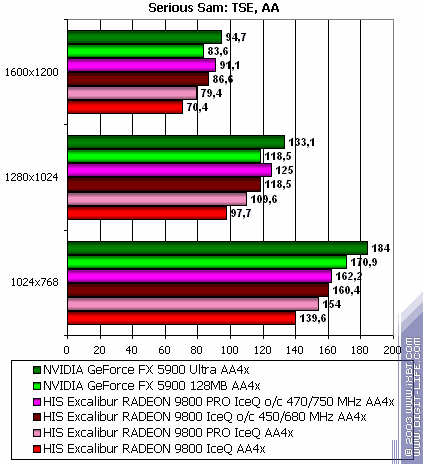 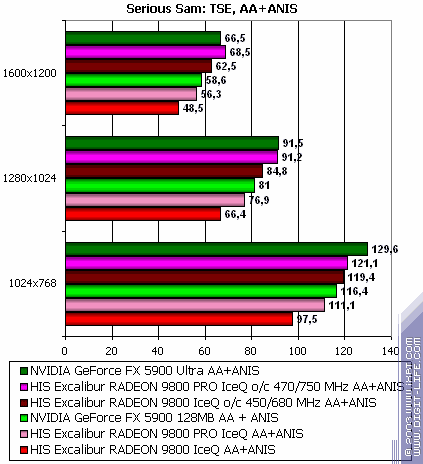 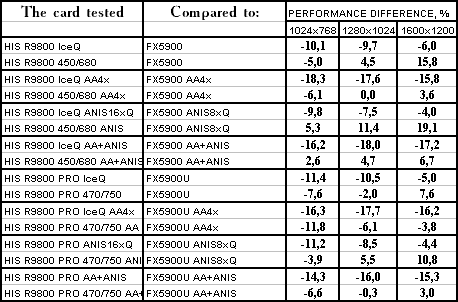 No AA, no anisotropy: both cards lose to their competitors, but remember about the price difference. AA enabled: HIS is ahead Anisotropy enabled: they lose again AA and anisotropy enabled: victory! Return to Castle Wolfenstein (Multiplayer)
 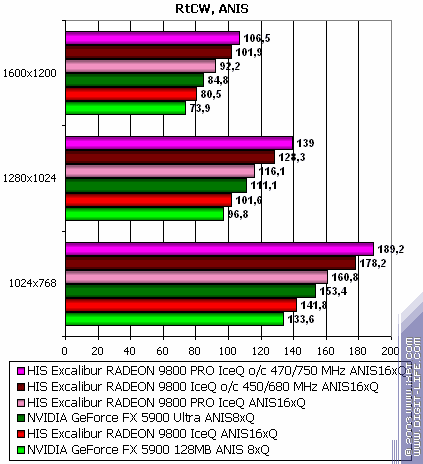 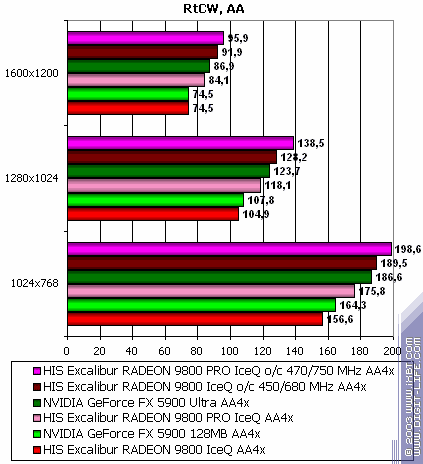 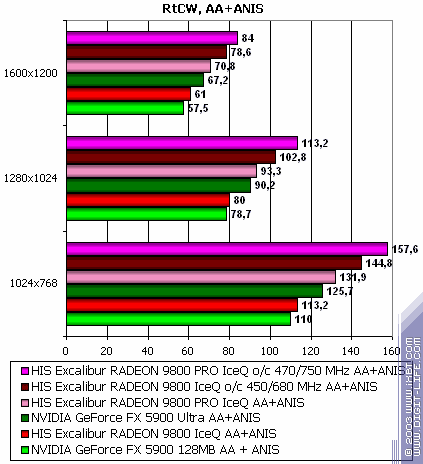 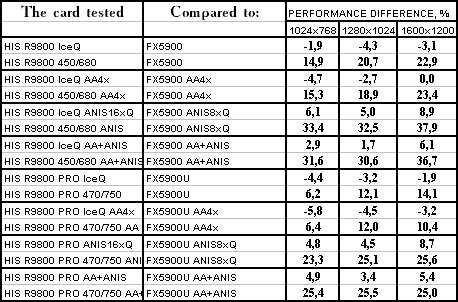 No AA, no anisotropy: parity AA enabled: the same Anisotropy enabled: HIS cards keep ahead a little bit AA and anisotropy enabled: the same Code Creatures
 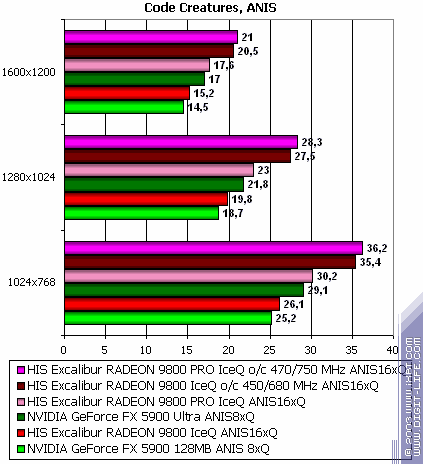 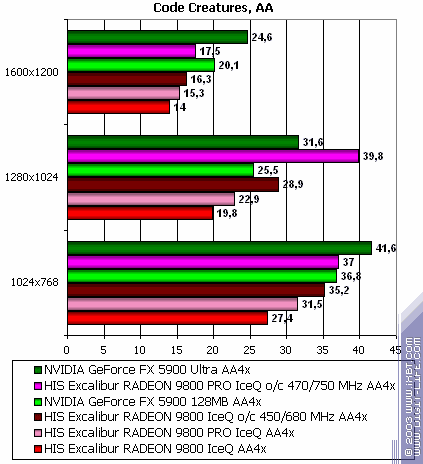 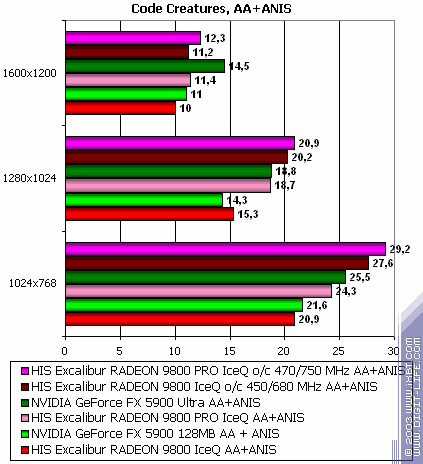 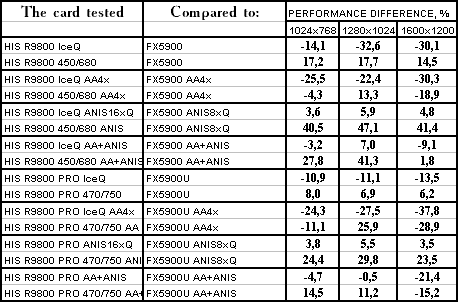 No AA, no anisotropy: defeat AA enabled: it gets even worse Anisotropy enabled: the card are a bit ahead AA and anisotropy enabled: in general, they fall a bit behind the
competitors Unreal Tournament 2003
 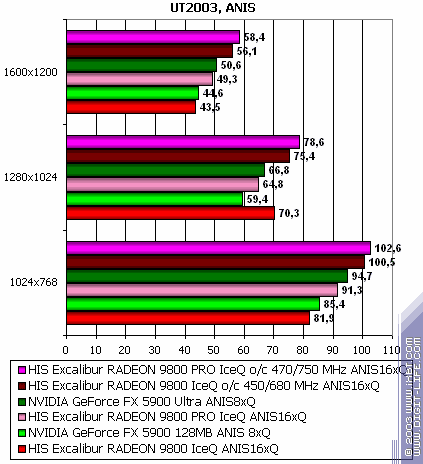 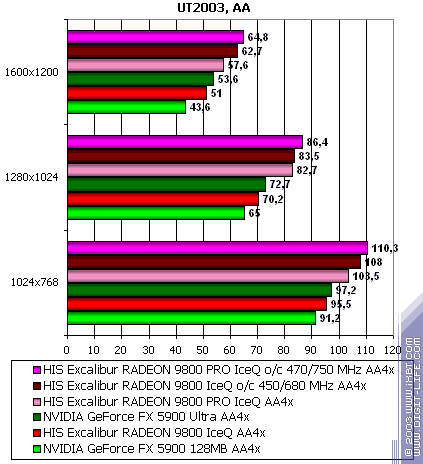 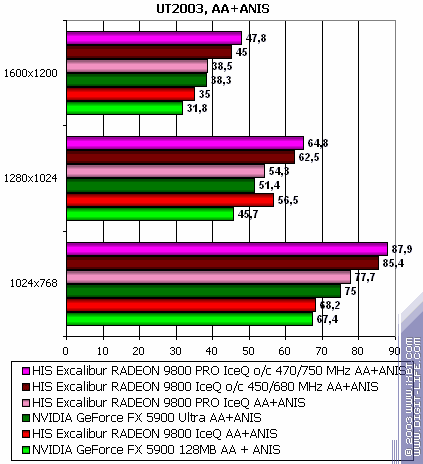 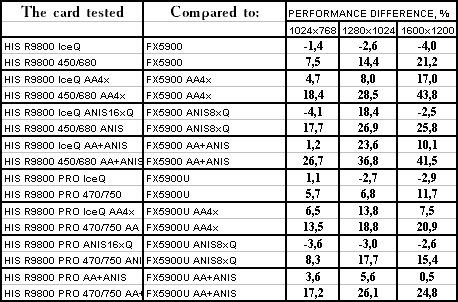 No AA, no anisotropy: almost parity AA enabled: HIS wins Anisotropy enabled: actually, they go on a par AA and anisotropy enabled: HIS wins again! Unreal II: The Awakening
 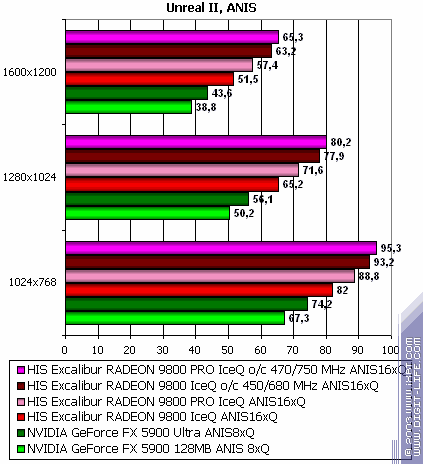 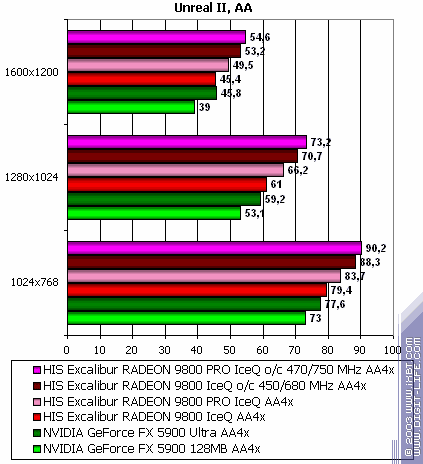 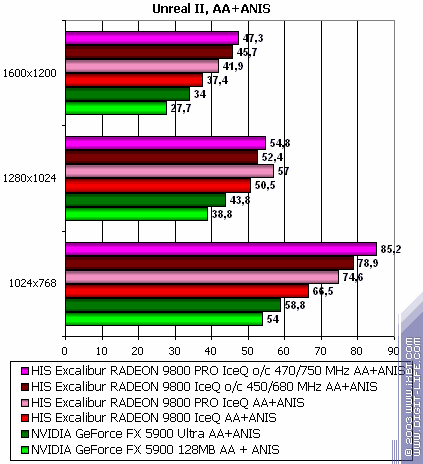 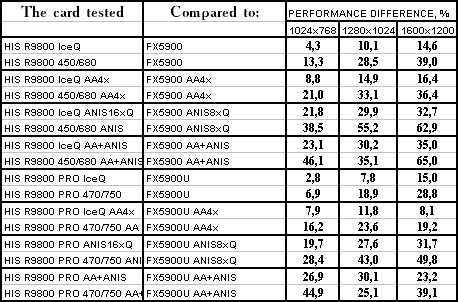 The RADEON 9800/9800 PRO win in all modes! RightMark 3D
 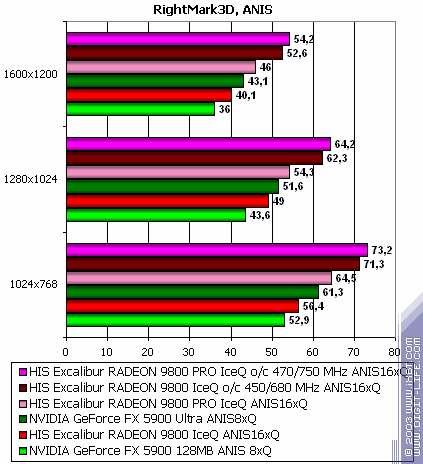 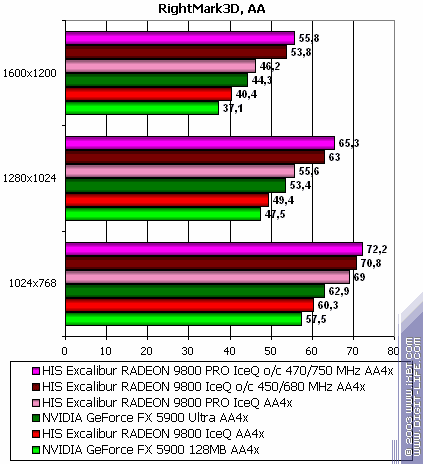 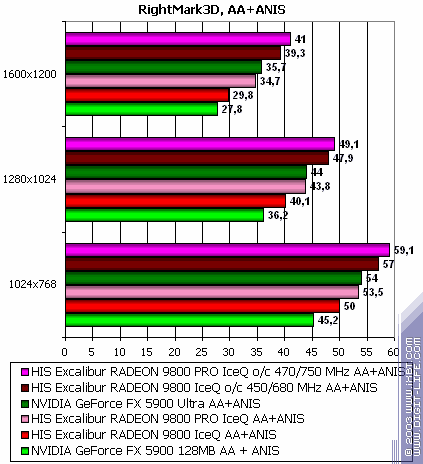 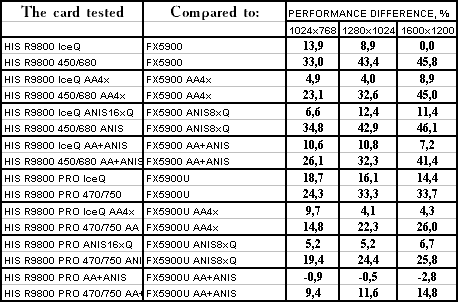 In general, HIS wins again thanks to shaders. HALO: Combat Evolved
 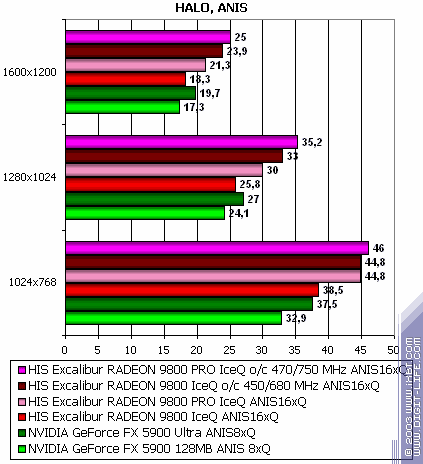 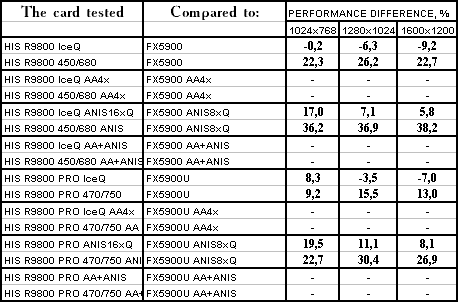 No AA, no anisotropy: the RADEON are a little slower AA doesn't work in this game. Anisotropy enabled: excellent scores! Splinter Cell
 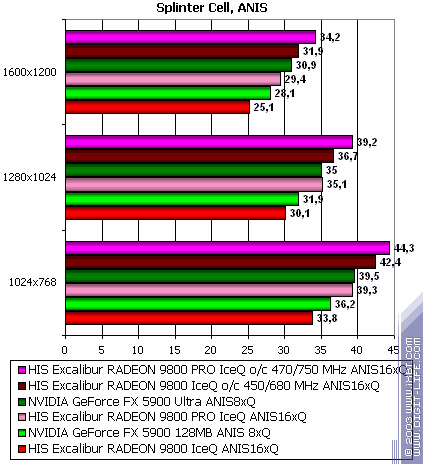 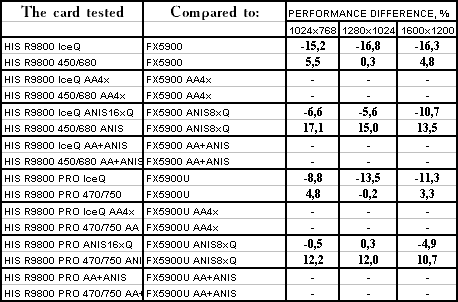 No AA, no anisotropy: defeat... AA doesn't work in this game. Anisotropy enabled: victory. In general, HIS cards win in this round. Tomb Raider: Angel Of Darkness, Paris5_4
 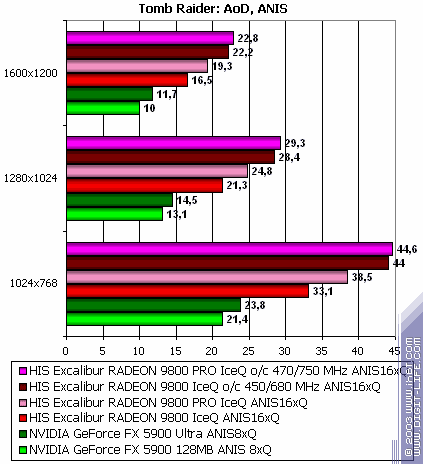 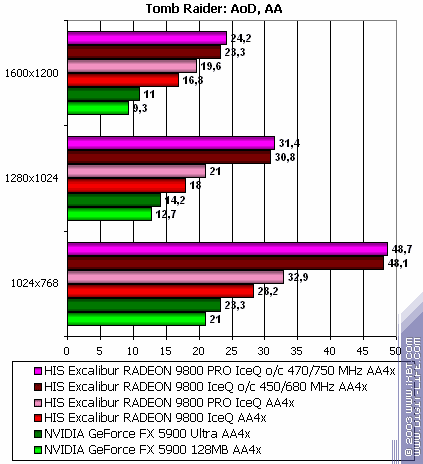 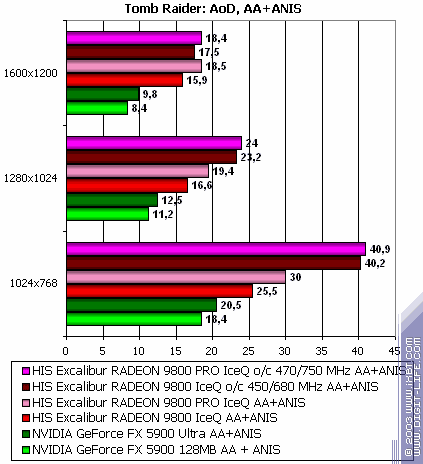 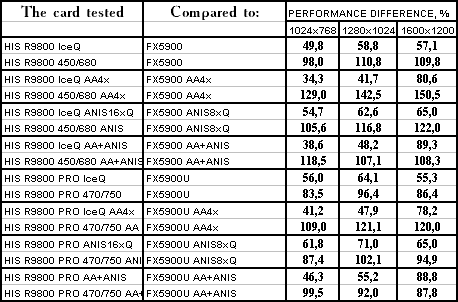 Again thanks to the shaders the cards from HIS take the lead. Call Of Duty
 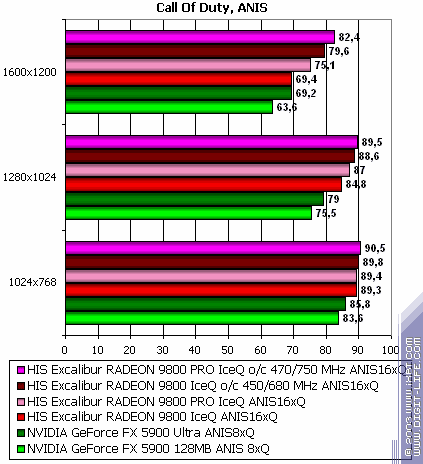 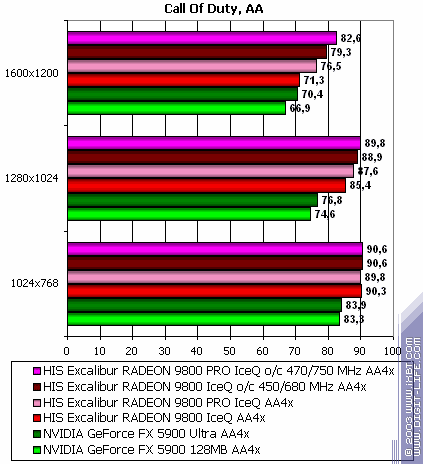 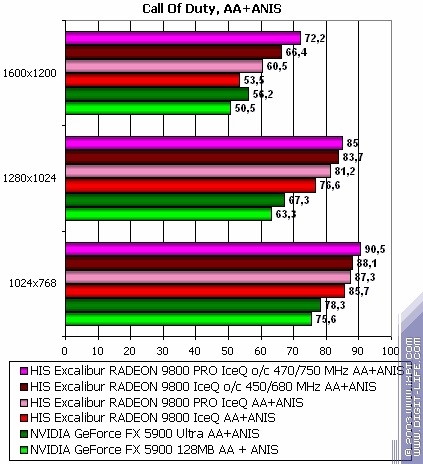 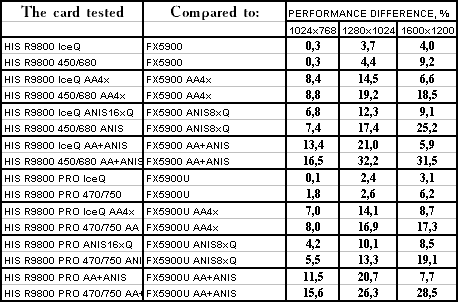 No AA, no anisotropy: the cards go on a par because of the limited potential of the platform AA enabled: the RADEONs win Anisotropy enabled: the same AA and anisotropy enabled: the R9800/9800 PRO take a lead again!
ConclusionIn general, the RADEON 9800/9800 PRO look superior to their competitors taking into account the prices for the beginning of January 2004. The HIS Excalibur RADEON 9800 IceQ Platinum 128MB is priced at around US$280, and the HIS Excalibur RADEON 9800 PRO IceQ Platinum 128MB at US$330. It's the high time to compare RADEON 9800 to FX 5900XT, and RADEON 9800 PRO to FX 5900, but we decided to make the competition tougher, but even in this case the cards from HIS outperformed the rest. In our 3Digest
you can find full comparison characteristics for video cards of this
and other classes.
Kind gratitudes to SVEGA company, HIS
and to Peter Yeung for help with cards.
Andrey Vorobiev (anvakams@ixbt.com)
Write a comment below. No registration needed!
|
Platform · Video · Multimedia · Mobile · Other || About us & Privacy policy · Twitter · Facebook Copyright © Byrds Research & Publishing, Ltd., 1997–2011. All rights reserved. | |||||||||||||||||||||||||||||||||||||||||||||||||||||||||||||||||